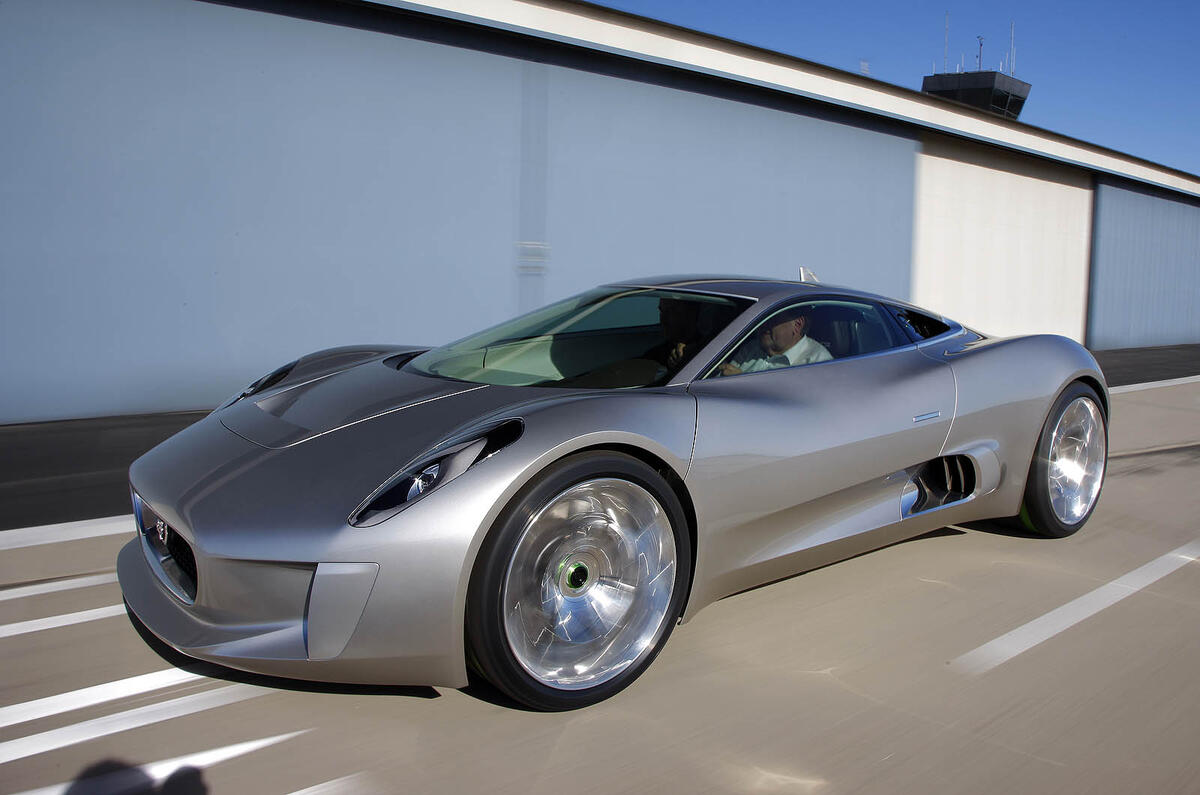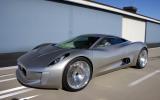What is it?
The Jaguar C-X75 concept rocked the recent Paris motor show. According to Nigel Taylor, the concept's lead engineer, C-X75 was spun off Jaguar's Limo-Green hybrid saloon project, as a kind of skunk-works job.
The result was C-X75, a car with a remarkably low weight of 1350kg and consequent spectacular performance: 0-62 mph in 3.4 seconds, 0-100 mph in 5.5 seconds, 0-300km/h (186 mph) in 15.7 seconds, and a top speed of 330km/h (205 mph).
Apart from its wonderful shape – which brilliantly combines 2015 modernity with surfaces and proportions that could only be from Jaguar – the C-X75's twin showpieces are tiny turbines, made in Worcestershire by Bladon Jets, but unlike jet cars of the past they don't drive the wheels. Instead, they run tiny, fist-sized generators to make electrical power for what is actually a four-motor, four-wheel drive electric car.
The car has an electric-only range just short of 70 miles. With this and the 60-litre diesel fuel tank, it has a 560-mile range – an average of under 30mpg. These are extraordinary, rule-changing figures for a car with 778bhp and 1180 lb ft of torque on tap.
What’s it like?
For all its exotic nature, the C-X75 is relatively simple in concept. It is smaller and lower than most supercars of its awesome potential, yet it has generous conventionally hinged doors, sensibly sized windows, reasonable rear vision and a roomy cabin.
Driving is simple, yet as you slip behind the wheel and into the hard seats (understandably shaped for show appearance, not long distance comfort) it's hard not to lose yourself in admiration for the profusion of entirely fresh ideas in this car. There's a beautiful one-piece 'sculpture' of panel-beaten aluminium, lining the whole door aperture.
Ian Callum says Jaguar's major suppliers were encouraged to “get crazy” with concepts, so the doors and bulkhead are covered with upwards of 250 tiny Bowers & Wilkins directional speakers, the size of those in mobile phones, for a completely new quality of sound.
The twin-dial instrument layout is actually a TFT screen, with gimbal-style readouts for speed and power consumption (the dream ticket is to be charge neutral and the right-hand dial shows you how to do it) while LED bars around the outside show you how far – or whether – each turbine is in action. They take about 15 seconds to spool up, and according to Nigel Taylor, are very quiet when you're in the car.
There's another screen between the dials for iPhone-style pages for other functions, plus a circular display on the console to show the functions of the elegant fore-aft 'gear' selector. Actually, the 8000rpm electric motors are simply geared to the wheels at a 3.1 to one reduction ratio, and need no clutch, but there are Normal, EV and Track modes which alter the instrumentation.
In Track, for instance, you can pull up a timing screen, set the suspension for a stiffer, lowered set-up, and even pull up a map of the circuit you might be driving on – complete with real-time advice about cornering lines and braking points. It would take quite a pessimist to say this electric car was less than inviting and exciting.
The C-X75 drives at present like a concept car, with heavy steering, a restricted lock and less performance than its exotic specification implies. Neither is it ever likely to be made for production, though designers and engineers insist that – like Limo Green – it has taught them a tremendous amount, and its shapes and ideas will survive.











































Join the debate
Add your comment
Re: Jaguar C-X75
Already have the sound of turbines, all you need next is a black paint job and a red LED repeater in the nose.
Re: Jaguar C-X75
What gets me is how compact/easily packaged the drivetrain (which produces enormous power) is. imagine it scaled down into a 'normal' car, it could probably all fit within the floors of something Merc A class like.....
Re: Jaguar C-X75
jmd67, a bit 220-ish at a pinch, but do you really think in the 21st Century that design cue's from twenty years ago are going to sell this?,plus it'll never see the road looking like this, the rear end is a bit 4.55pm on a Friday, not resolved, it makes it look light at the back, no, not a confident rear at all!.